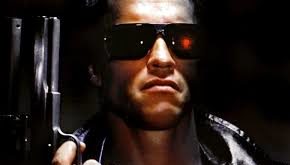The world needs another Muhammad Ali tribute like it needs another Donald Trump interview. So I’ll let others assess his pugilistic powers, his poetic talents and his social impact. I would, however, like to share a few personal anecdotes about the greatest sports icon of my lifetime.
I was 12 years old when I listened to a radio broadcast of the first fight between Ali, then known as Cassius Clay, and Sonny Liston in 1964. Though Ali was a huge underdog against the fearsome champion, I was captivated by the challenger’s brash behavior and showmanship. I was too young to have any historical perspective, but I instinctively knew that Ali was different than any other athlete I had ever seen or read about. I cheered wildly when Liston failed to answer the bell for the seventh round in Miami Beach, making the 22-year-old Ali the second-youngest heavyweight champion. It was also my first exposure to the bombastic style of Howard Cosell, who interviewed Ali in the ring after the fight. Decades later, Cosell would hang up on me during a phone interview when he objected to a question I asked. He called me “an impudent young man,’’ which I took as a compliment since I was in my late 30s at the time.

During my freshman year in college, I watched an outdoor, closed-circuit telecast of the first Ali-Joe Frazier fight at Rosecroft Raceway, a harness-racing track in Fort Washington, Maryland. It was a chilly March night in 1971 and the sound system was so poor that I could barely hear what Burt Lancaster, who inexplicably was doing the color commentary, was saying. But it didn’t matter. I could clearly see that my hero was losing. I convinced myself that he still had a chance until Frazier floored him with a savage left hook in the 15th and final round. Ali got up almost immediately, but I knew he was beaten. When the unanimous decision was announced, I cried – the first and only time I’ve ever shed tears over a sporting event.

In 1972, while visiting my sister in Pittsburgh, I saw Ali put on a 10-round boxing exhibition at Civic Arena prior to a Pittsburgh Condors’ ABA basketball game. Ali, who was training to fight slugger Mac Foster in Tokyo, sparred against four different boxers before a sparse crowd. Ali fell to the canvas after being hit by local favorite Sam McGill, though it looked like a fake knockdown to me. Ali often pretended to wobble after being hit by a hard punch, but he was only knocked down four times in his entire career.
A few months after graduating from college in 1974, I drove to Ali’s training camp in Deer Lake, Pennsylvania, to do a freelance magazine story on his preparations for a bout against undefeated champion George Foreman in Kinshasa, Zaire (now the Democratic Republic of the Congo). In those days, before sports stars were insulated by a wall of agents, publicists and managers, almost anyone could visit Ali’s rustic Poconos camp and talk to the world’s most famous athlete. Even someone like me, a reporter for a weekly newspaper in Maryland who had never written a sports story in his life. Ali greeted me like a long lost friend and invited me to watch a sparring session in his log-cabin gym. I was puzzled – and a bit concerned – when he lay on the ropes and let his sparring partners pummel him in the stomach. Later, of course, I realized he was practicing the “rope-a-dope’’ strategy that allowed him to knock out Foreman and regain the heavyweight title.

In the early 1990s, when I was the national college football writer for The Associated Press, I met Ali several times while covering Notre Dame in South Bend, Indiana. Ali lived in nearby Berrien Springs, Michigan, and would sometimes come to Notre Dame practices and games. Already showing serious signs of Parkinson’s disease, his speech was slurred and his movements were unsteady. At practices, he would be driven around in a golf cart. Yet he remained a magnetic draw for players, coaches and fans, who beamed when they shook his hand and acted like excited children when they got his autograph. One day, when I mentioned our meeting at his Deer Lake training camp, Ali told me how much he loved the place and asked me if I enjoyed my visit there. I said I particularly enjoyed the boulders at the camp that were painted with the names of legendary fighters like Jack Dempsey, Joe Louis and Rocky Marciano. Ali winked at me and said, “I forgot to make one for you.’’
The last time I saw Ali was about a dozen years ago at a charity event in New York. By then, his face was a frozen mask and his mumble was so bad that he was hard to understand. But he was still the center of attention in a crowd of famous people wearing tuxedos and fancy gowns. One journalist looked around the room and noted, “There are a lot of celebrities here, but only one legend.’’

Ali was no saint. He taunted opponents, married four times, had children out of wedlock, and worshipped Elijah Muhammad, the controversial Black Muslim leader who preached that whites were “blue-eyed devils.’’ But he also was incredibly generous, loyal and courageous – a man willing to go to jail for his beliefs and one who never complained about the cruel disease that robbed him of his verbal and physical genius. In my mind, he’ll always be “The Greatest.’’



